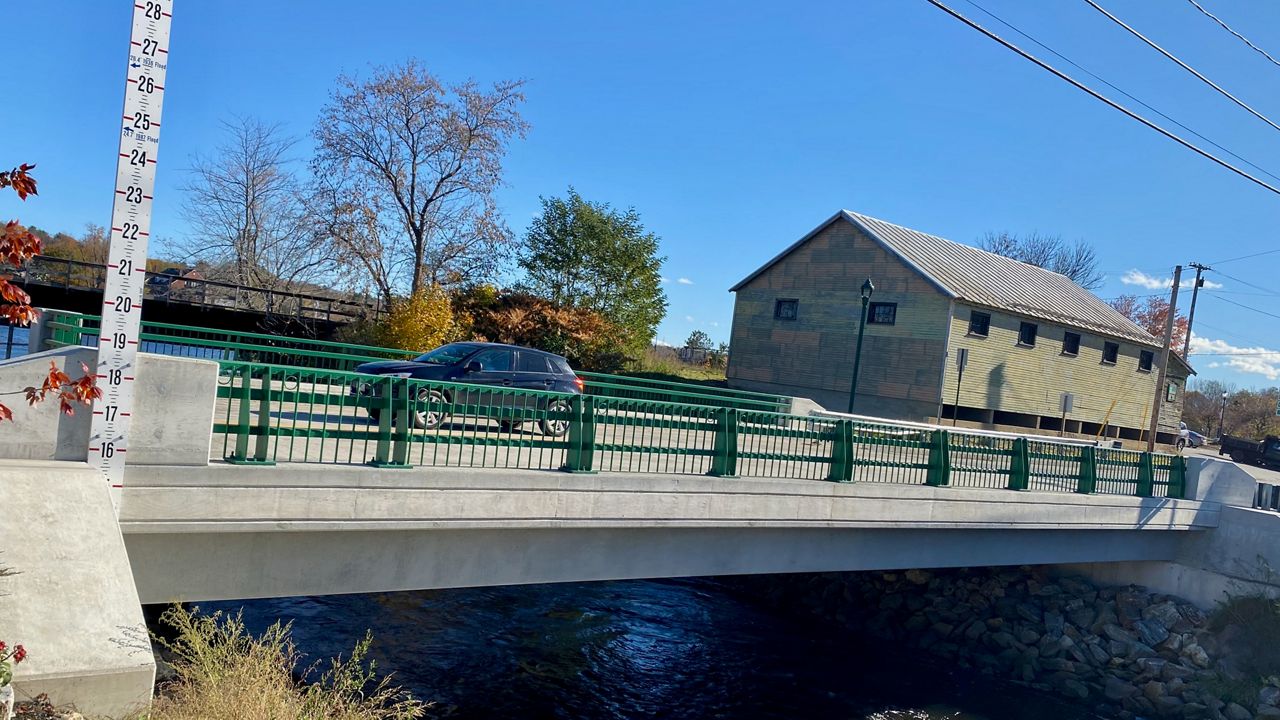Scott Klinger and his wife Kathy Brown moved to Gardiner about a year ago and they love it.
For years, they traveled through Maine to vacation on Prince Edward Island. Then, “Maine started growing on us,” he said.
“When she retired and we had some flexibility, we said let’s move to Maine,” he said, adding that he continues to work for a Washington, D.C., economic justice nonprofit.
Klinger and Brown, who was recently appointed to the Gardiner City Council, were two of about 20 people who attended a meeting Thursday night to hear a consultant’s take on what Gardiner can do to improve. The Vermont-based consulting firm DuBois & King presented a draft report that compared Gardiner to Skowhegan and Bath – three municipalities along the Kennebec River.
The Heart of Gardiner’s Downtown Plan is the culmination of work by several groups and was paid for by a grant from the Maine Department of Agriculture, Conservation and Forestry’s Coastal Communities Grant Program. The downtown plan’s roots go back to 2012, when the city launched an initiative that led to waterfront concerts, beautification efforts and other improvements.
During Thursday’s meeting, DuBois & King senior planner Dayton Crites outlined the draft report, offering suggestions about improving the safety of sidewalks around Gardiner Common, replacing uneven brick sidewalks with modern pavers and improving the large Arcade parking lot.
He said Gardiner’s population (just over 5,500 people) has grown 2.9%, which is significantly faster than Kennebec County as a whole, which is up 1.32%, according to the latest census data. Like much of Maine, houses in Gardiner are selling fast and for more money than the list price, making it difficult to buy a home. Also, there’s not much lodging for visitors, he said.
Gardiner could do a better job marketing all that it has to offer.
“Identity is not clearly communicated when you are planning a trip to Maine,” he said.
The consultants are seeking feedback on the plan in advance of presenting it to Gardiner City Council on Dec. 1.

In many ways, Gardiner stacks up favorably when compared to Skowhegan and Bath, Crites said. The report noted that Gardiner has more downtown parking, more green space, and less paved area than both Bath and Skowhegan. However, 58% of Gardiner’s downtown is within the 100-year floodplain, compared to only 14% of Bath’s downtown. A similar number was not available for Skowhegan.
“For Gardiner, the risk of disruption to its local economy due to severe flooding is substantial,” the report states, referencing a 2021 report from the First Street Foundation that said Gardiner had the “greatest proportion of risk to commercial properties and infrastructure in the state of Maine.”
Downtown building owner and former city council member Logan Johnston asked whether the consultants had studied federal and state regulations, particularly those focused on flooding.
“One of the challenges we always have is sometimes our dreams and our plans run contrary to federal and state regulations,” he said.
The report recommends that Gardiner do a better job with entrances to the city, saying the gateways should be defined by street lights and landscaping, narrower roadways to slow down traffic and improved walkability.
It also pointed out the now-vacant lot at the corner of Bridge and Water streets that is the former site of Chapman Fuel. Although there are some restrictions on how the lot can be used, Crites said it presents an opportunity for a new two-story building that could be designed to fit with the character of the rest of the city.
Downtown business owner Clare Marron, who owns the Monkitree gift shop, called the proposal “a good draft,” but noted that concerns about flooding need to be more fully addressed.
“The issues related with flooding are very difficult,” she said. “It’s not like we’re going to stop floods from happening.”
Others asked about whether more could be done to improve the waterfront along the river, saying there’s opportunity to draw boaters to the downtown to shop and eat.
Crites invited feedback on the draft plan through Nov. 15 and said additional information about ways to implement it will be included in the final version.
“Tell us what we’re missing,” he said. “Tell us what doesn’t make sense.”





